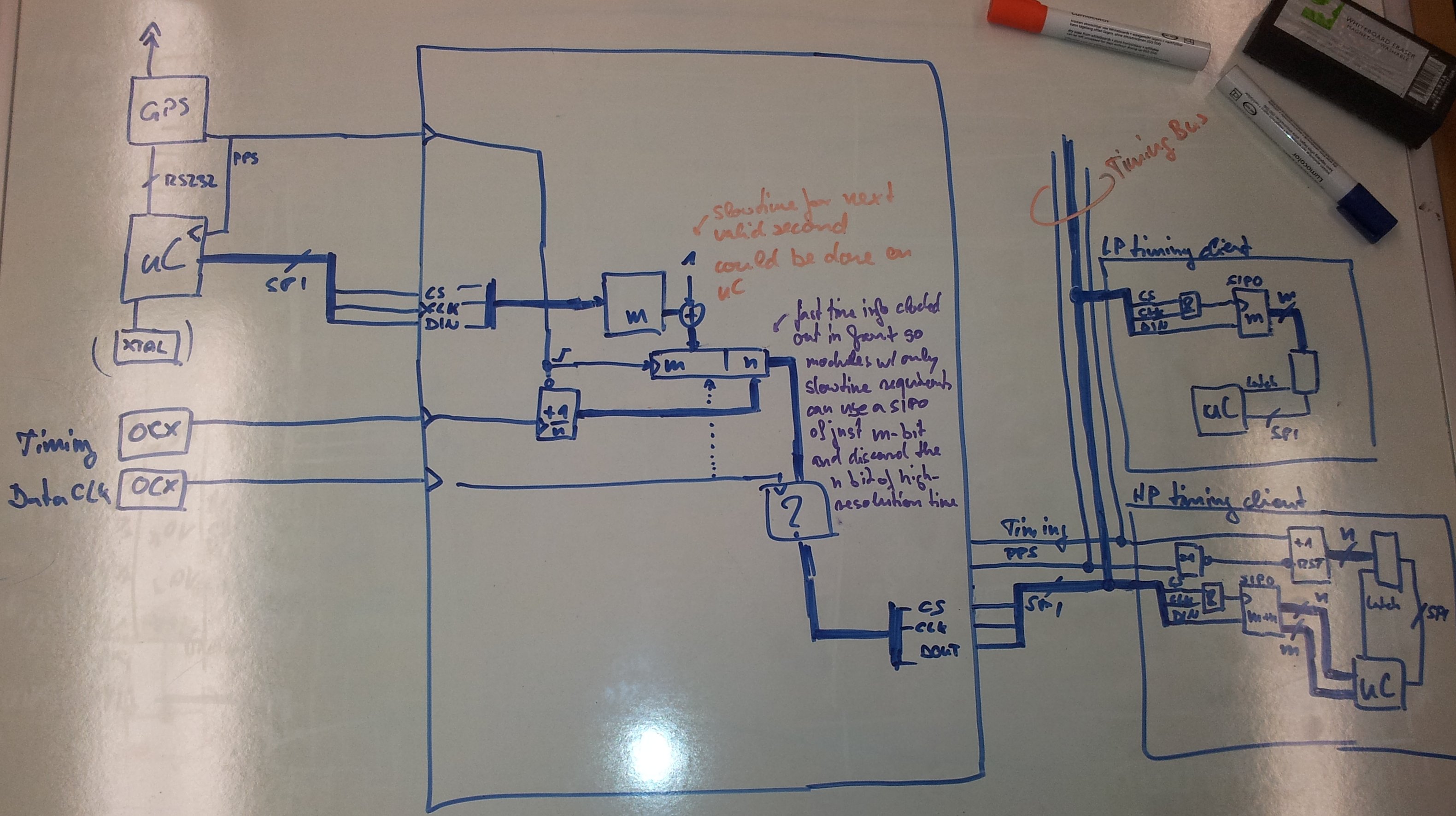Dies ist eine alte Version des Dokuments!
The Timing Module (flutter)
Overview / General information
All groundstations need to be timing synchronized. To achieve that, the timing module is used. The timing module will recieve timing data from a timesource and feed the timing bus in the groundstation. Every groundstation must only have 1 timing module but there's nothing enforce that (meaning it just will not work if two timing modules are installed). The timing module can usually also give us the position of the station (when using gps, galileo et al).
The timing module will in always way contain theese components:
- a timesource we call TIMESOURCE (in the current designs we use GPS)
- a microcontroller we call MICROCONTROLLER (to configure the timesource)
- a fast oscillator we call OSCILATOR to supply the fastclock output
- a 40-bit counter to count the clock ticks of the OSCILATOR
- a 32-bit serial-in-parallel-out spi register we call SLOWTIME_IN for recieving the slow timing information
- two latches, 40- and 32-bit called SLOWTIME_LATCH and FASTCLOCK_LATCH
- a 72-bit parallel-in-serial-out spi register called SLOWTIME_OUT
let me say, that the registers, latches, etc could be made entirely from discrete 74-ICs but imagining it is creepy. Thus we decided to use an FPGA here (CPLDs that contain enough registers are very expensive).
See this picture. It shows a drawn schematic of the timing bus with measurement modules and a timing module.

